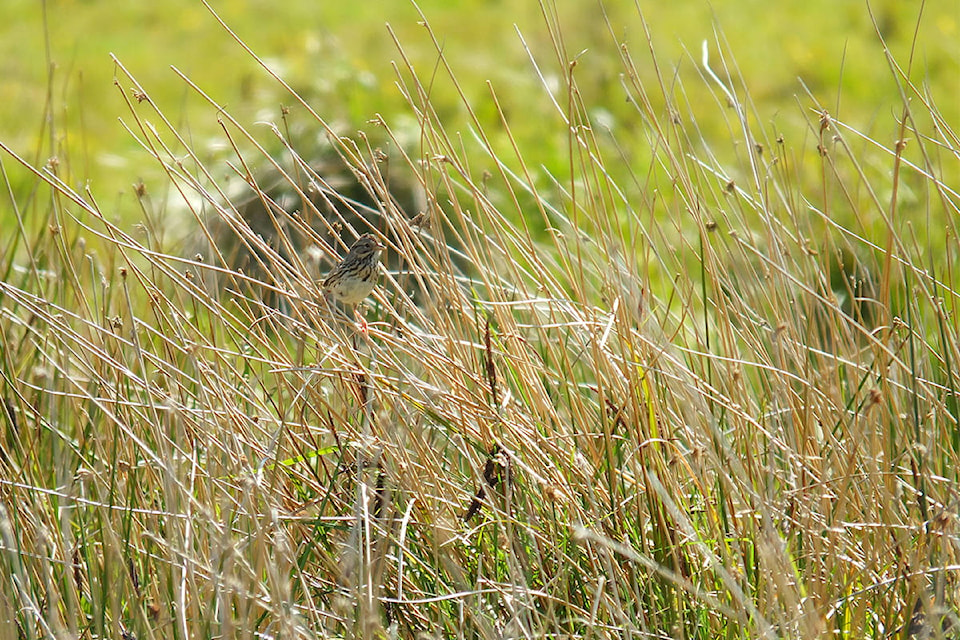It’s been all go. Visitors from Ireland – they loved it – got a trip to “town” for the eyes and a wonderful crossing with lots of birds in Hecate Strait. The Sooty Shearwaters were simply amazing. Thousands of them rose from the water as the ship sailed by and hundreds of White-winged Scoters kept up the pace.
Which was which? They both showed black as the primary colour, but on closer view, the scoters’ large white wing patch showed clearly. It was hard to tell sometimes because both species flew away from us, but the shearwaters, on stiff wings, flew low to the water whereas the scoters flapped busily with wings bent. There was also a surprising number of Cassin’s Auklets, small and dark and speedy. They too joined the merry gang in the shallow waters of the strait.
They are all out there because the food is there. As the ship moved further east the number of birds diminished until there was only the occasional Pacific or Common Loon to be seen.
Semi-palmated Plovers look a little like Killdeer. They are black and white and have one black breast band whereas the Killdeer has two. A flock of 20 landed in the Delkatla Wildlife Sanctuary last week in the middle of a southeaster; they were on their way to somewhere else. They stayed loosely together and were gone the next day.
“Semis” nest on Haida Gwaii, preferably on the high beach amid drift logs, beach plants and shingle. They lay four eggs and the hatchlings leave the nest about a day after they break out of the shell. They are hardy little things — their long strong legs are already built to run as they follow their parents and forage for aquatic invertebrates on the upper beach. Semis returned to Haida Gwaii in April and started to nest right away, so youngsters will be showing up any time now. They are tiny, fluffy and easily overlooked.
It’s been a few years since we took a tally of the local Lincoln Sparrow population.
During the early 1980s upward of 70 nests, always in large clumps of grass, were found in Delkatla. The sanctuary lands suited them perfectly as they rely on wet meadows for nesting and live low to the ground. They feed on all kinds of insects, including beetles, moths and caterpillars.
When disturbed they slip away through the dense grass before flying to a low bush and hiding behind leaves and branches. Four or five eggs hatch after 10 to 12 days and, unlike the semis, the chicks stay in the nest for almost two weeks before fledging.
So, were there any Lincoln’s Sparrows still nesting in their preferred places? Yes. More than 50 were seen just last week. Most of the young have now hatched and the population seems healthy.
